1. Burj Khalifa
Dubai's landmark building and major tourist attraction is the Burj Khalifa, which at 829.8 meters is the tallest building in the world and the most famous of the city's points of interest.
For most visitors, a trip to the observation deck on the 124th floor here is a must-do while in the city. The views across the city skyline from this bird's-eye perspective are simply staggering.
The slick observation deck experience includes a multimedia presentation on both Dubai and the building of the Burj Khalifa (completed in 2010) before a high-speed elevator whizzes you up to the observation deck for those 360-degree views out across the skyscrapers to the desert on one side and the ocean on the other.
Nighttime visits are particularly popular with photographers due to Dubai's famous city-lights panoramas.
Buy your Burj Khalifa "At the Top" Entrance Ticket in advance to avoid long line-ups, especially if you are planning to visit on a weekend.
Back on the ground, wrapping around the Burj Khalifa, are the gardens of Burj Park, with walkways dotted with modern art sculptures.
Burj Park is where you come to see the Dubai Fountain display on Burj Lake. Modeled on the famous Fountains of Bellagio in Las Vegas, this is the world's tallest performing fountain, with water displays shooting up to 150 meters high into the air.
2. Visit an Underwater World at Dubai Aquarium
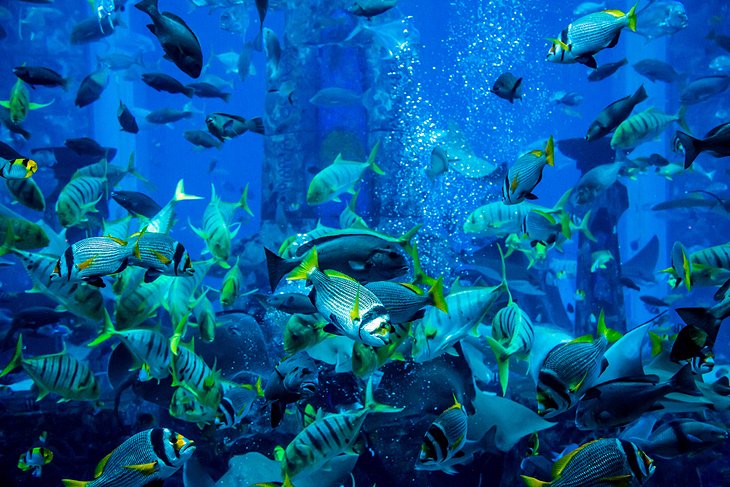
One of the city's top tourist attractions, the Dubai Aquarium houses 140 species of sea life in the huge suspended tank on the ground floor of the Dubai Mall.
Although there is free viewing from the mall, the highlight of a visit here is entering the Underwater Zoo, with its three-story high, 270-degree views along the length of the glass-panel tunnels.
As well as viewing the vast amount of marine life, the Dubai Aquarium offers plenty of aquatic experiences and things to do for visitors who want a close-up encounter with some of the aquarium's inhabitants, from hand-feeding eagle rays to diving with reef and tiger sharks.
3. Soak Up the Sun at JBR (Jumeirah Beach Residence) Beach

This long, wide strip of sandy white bliss is the number one beach destination for Dubai visitors.
Some of Dubai's most popular beach resorts are strung out all along its length, making this one of the most popular places to stay for visitors who want to make hitting the beach a major part of their Dubai stay.
The large public areas of the beach have excellent facilities, with plenty of sun loungers, restaurants, lifeguards patrolling the stretches designated for swimming, and water sports operators offering jet skiing, kayak rental, parasailing, and boat rides.
This is a safe beach choice for families traveling with tots, as the turquoise water of the Gulf lapping the shore is shallow and calm.
Address: Dubai Marina, Dubai
4. Head Out into the Desert
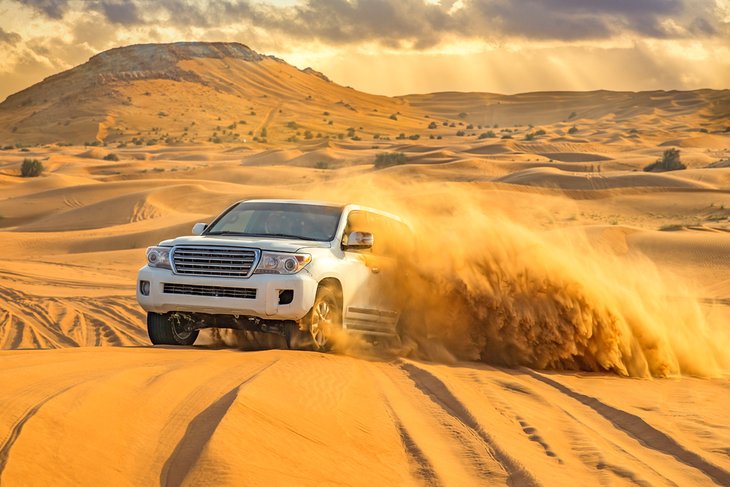
You don't have to travel far from Dubai's coastal skyline of skyscrapers to reach some of the UAE's desertscapes of rippling dunes.
Both the dune fields and desert of the Dubai Desert Conservation Reserve and the orange-hued dunes of Maleha (actually in the Emirate of Sharjah) are within day-tripping distance of the city.
Desert adventure tours can combine a range of activities, from sandboarding, camel rides, and 4WD safaris to traditional Arabian falconry displays and desert dinners under the stars. There are also options for overnight camping under the stars.
The typical tour itinerary, giving visitors a taster of desert life, is easily slotted into even a short trip to Dubai, taking around six hours door to door, with a mid-afternoon departure from the city.
The Dubai Desert 4x4 Safari offers a half-day desert adventure and includes a camel ride, sandboarding lessons, a sunset barbecue, and a belly dancing show.
For a less rushed tour experience, choose one of the companies that operate inside the Dubai Desert Conservation Reserve, where trips can include wildlife drives to spot the reserve's free-roaming herds of gazelles and, if you're lucky, Arabian oryx.
5. Walk through History in Al Fahidi Quarter (Old Dubai)
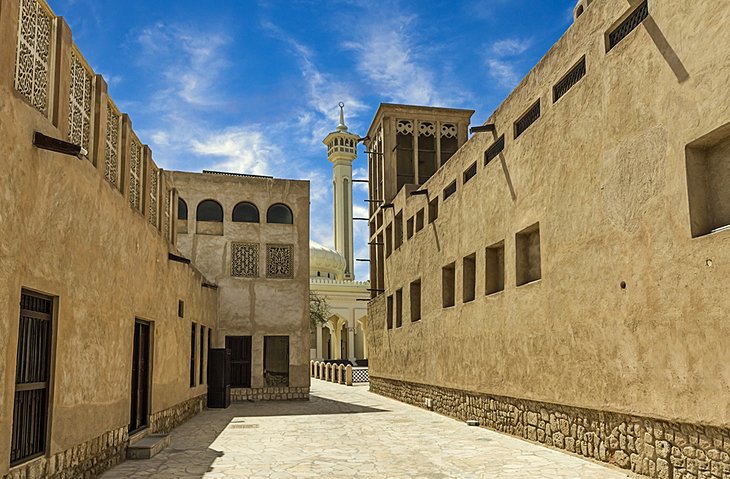
The Al Fahidi Quarter (previously known, and sometimes still referred to as the Bastakia neighborhood) was built in the late 19th century to be the home of wealthy Persian merchants who dealt mainly in pearls and textiles and were lured to Dubai because of the tax-free trading and access to Dubai Creek.
Al Fahidi occupies the eastern portion of Bur Dubai along the creek, and the coral and limestone buildings here, many with walls topped with wind-towers, have been excellently preserved.
Wind-towers provided the homes here with an early form of air conditioning - the wind trapped in the towers was funneled down into the houses. Persian merchants likely transplanted this architectural element (common in Iranian coastal houses) from their home country to the Gulf.
Lined with distinct Arabian architecture, the narrow lanes are highly evocative of a bygone, and much slower, age in Dubai's history.
Inside the district, you'll find the Majlis Gallery, with its collection of traditional Arab ceramics and furniture (housed in a wind-tower), and the Al Serkal Cultural Foundation with a shop, café, and rotating art exhibitions (located in one of the historic buildings).
6. Ski then Shop at Mall of the Emirates
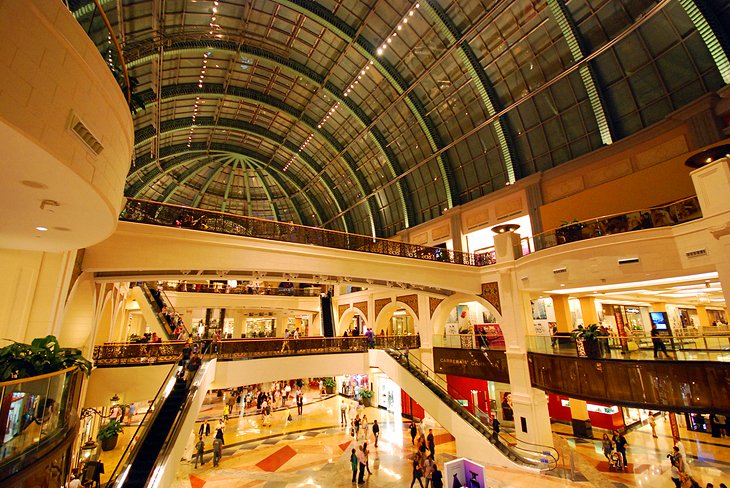
Mall of the Emirates is one of the city's most famous malls, with the spectacular (and surreal) Ski Dubai facility inside.
The indoor ski slope is complete with chairlifts and a penguin enclosure, all at a continuous temperature of -4 degrees Celsius.
There's also a cinema complex and a family entertainment center with a whole host of rides aimed at both the big and small.
The shopping opportunities are boundless, as are the eating options, offering every conceivable world cuisine.
Address: Sheikh Zayed Road, Dubai
7. Snap Sunset Pics at Dubai Frame
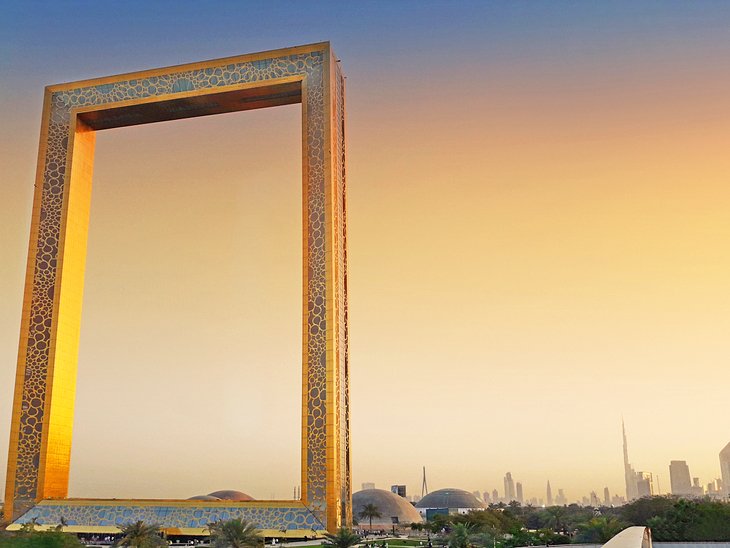
Sitting slap-bang between Dubai's older neighborhoods clustered around the creek and the city's modern sprawl, this ginormous 150-meter-high picture frame is one of Dubai's latest sights.
Inside, a series of galleries whisk you through the city's history and explore Emirati heritage before you travel up to the Sky Deck, where there are fantastic panoramas of both old and new Dubai to be snapped on the viewing platforms.
Afterwards check out Future Dubai gallery, which imagines what a futuristic vision of the city will look like.
Address: Zabeel Park, Sheikh Khalifa bin Zayed Road
8. Take to the Water at Kite Beach & Umm Suqeim Beach
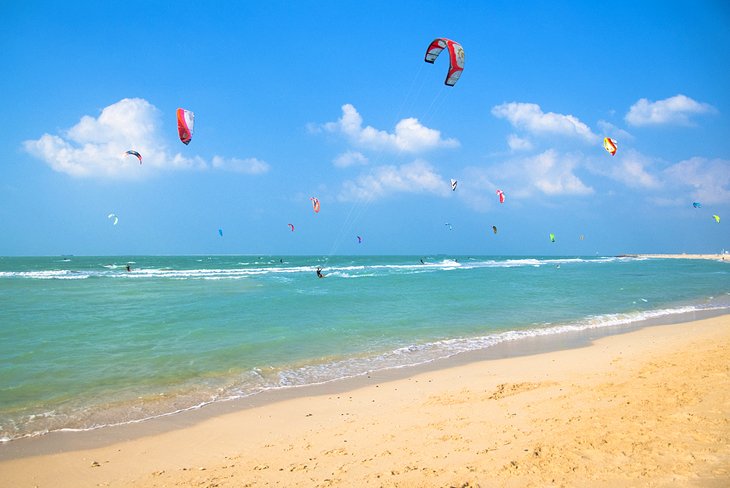
Thanks to its surf and prevailing wind, the northern section of Umm Suqeim Beach is Dubai's top spot for kitesurfing.
The beach is home to an array of water sports operators offering equipment hire, as well as kitesurfing lessons, along with paddleboarding and kayak rental.
This long stretch of yellow-sand beach sweeps south along the coast (becoming Umm Suqeim Beach), with plenty of space for sunbathers looking to lap up a lazy day of swimming and soaking up the rays on the sand and excellent facilities and dining choices. There are good views of the Burj Al Arab from the southern end of the beach.
While in the Jumeirah area, it's well worth brushing off the sand for an hour to visit the Majlis Ghorfat Um Al-Sheef just a three-kilometer hop from the beach. Built in 1955, this was the summer residence of the late Sheikh Rashid bin Saeed al-Maktoum.
The residence, made out of gypsum and coral-block, has been restored and maintains much of the original beautiful decor, giving you a better understanding of the opulent lifestyle of Dubai's rulers.
The Majlis Gardens feature a reproduction of an impressive Arab irrigation system, and many shady date palms.
Address: Jumeirah Road, Jumeirah, Dubai
9. Explore Dubai Creek
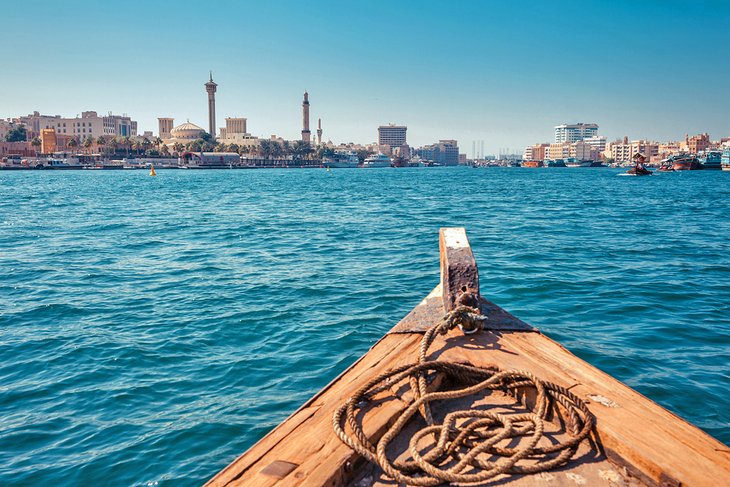
Dubai Creek separates the city into two towns, with Deira to the north and Bur Dubai to the south.
The creek has been an influential element in the city's growth, first attracting settlers here to fish and pearl dive.
Small villages grew up alongside the creek as far back as 4,000 years ago, while the modern era began in the 1830s when the Bani Yas tribe settled in the area.
The creek is where you come to capture city views from the water, either by taking a trip on one of the many dhows that have been restored as tourist cruise boats or by hopping on an abra (small wooden ferry) between the ferry points on the creek's Bur Dubai and Deira banks.
On the Bur Dubai side of the creek, rubbing up against the Bastakia neighborhood, the waterfront has been regenerated as the Al Seef district, with a waterfront promenade backed by traditional coral-block and limestone buildings, a floating market, and shops selling crafts. It's a great place for a stroll with excellent water views.
Farther southeast down the creek, on the Deira bank just north of Al-Maktoum Bridge, is the Dhow Wharfage. It's still used by small traders from across the Gulf who sail their dhows onward to Kuwait, Iran, Oman, India, and down to Africa's horn.
This tiny remnant of Dubai's traditional economy is a fascinating place to wander around and watch cargo being loaded and unloaded on and off the dhows.
At the southeastern end of Dubai Creek, just before the creek joins with Dubai Canal, is the newly developed Dubai Creek Harbor with a waterfront marina walkway, which offers excellent vistas of the city skyline.
10. Skydive over Dubai
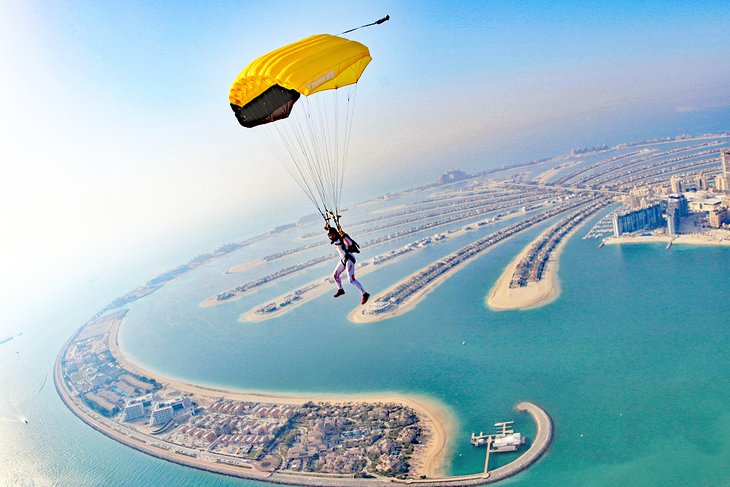
For the ultimate sightseeing adrenaline rush while you're in the city, tandem-skydive over Dubai from Skydive Dubai's Palm Drop Zone.
There are bird's-eye views of the city's skyscraper coastline, Dubai Marina, and the artificial islands of Palm Jumeirah, all the way down the 3,900-meter-high plunge.
The entire experience takes around 90 minutes and includes the flight; an instructor you'll be harnessed to during the skydive; and a skydiving camera operator, who'll take pictures during your dive.
If you prefer desert dune scenery, Skydive Dubai also operates a separate tandem-skydiving experience in the desert, about 35 kilometers out of the city.
Skydiving in Dubai is an activity you need to book as far in advance as possible due to limited numbers and the high popularity of the experience.
11. Haggle in the Souks of Deira
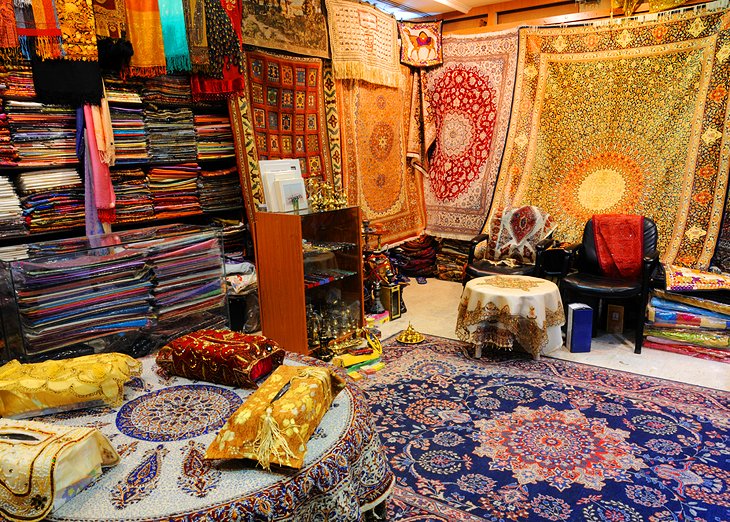
Deira lies on the northern bank of Dubai Creek and the winding streets here unveil the melting pot of different nationalities that have come to call Dubai home.
On the shore, ancient dhows load and unload with modern banks, hotels, and office buildings as a backdrop.
For travelers, Deira is most famous for its traditional souks (markets), which bustle with shoppers at all times of the day.
Deira Gold Souk is world-renowned as the largest gold bazaar in the world.
The Deira Spice Souk sells every imaginable spice, with stalls overflowing with bags of frankincense, cumin, paprika, saffron, sumac, and thyme, as well as the fragrant oud wood, rose water, and incense.
The fish market provides a much less touristy experience.
While in the district, culture lovers shouldn't miss two of Deira's finely restored architectural gems.
Heritage House was built in 1890 as the home of a wealthy Iranian merchant and later became the home of Sheik Ahmed bin Dalmouk (a famous pearl merchant in Dubai). Today, it's a great chance to see the interior of a traditional family home.
The Al-Ahmadiya School, constructed in 1912, is the oldest school in Dubai and is now a museum of public education.
12. Tour Jumeirah Mosque
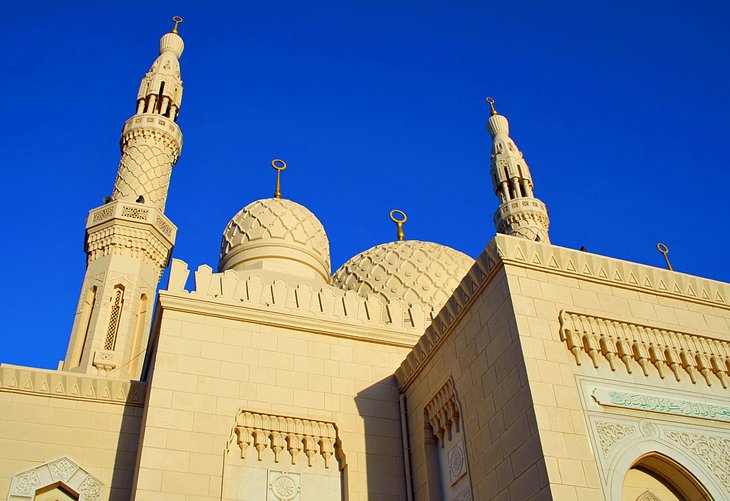
Jumeirah Mosque is considered by many to be the most beautiful of Dubai's mosques.
An exact copy of Cairo's Al-Azhar Mosque, which is eight times its size, the Jumeirah Mosque is a fine example of Islamic architecture.
This stone structure is built in the medieval Fatimid tradition, with two minarets that display the subtle details in the stonework. It is particularly attractive in the evening when lit with floodlights.
The Sheikh Mohammed Bin Rashid Centre for Cultural Understanding (which also runs a program of tours, lectures, Arabic classes, and cultural meals) organizes guided tours of the mosque designed to try to foster a better understanding of the Muslim faith.
Tours begin at 10am daily, except Fridays.
Address: Jumeirah Road
13. Take Afternoon Tea in the Burj al-Arab
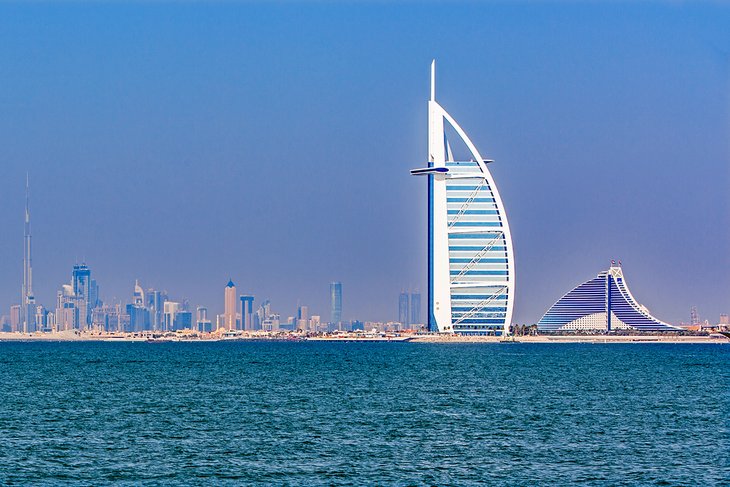
The Burj Al-Arab is the world's tallest hotel, standing 321 meters high on its own artificial island on the Dubai coastline.
Designed to resemble a billowing dhow sail, the exterior of the building is lit up by a choreographed, colored lighting show at night.
Decadent in every way possible, the Burj Al-Arab is one of the most expensive hotels in the world, with the most luxurious suites costing more than $15,000 for one night.
For those without unlimited credit, the way to experience the over-the-top opulence is to book afternoon tea at the Skyview Bar (a minimum spend is required) on the 27th floor.
Non-guests can also book dinner at the underwater Al-Mahara Restaurant, where floor-to-ceiling glass panels in the dining room walls allow you to view sea life while you eat, or you can enjoy lunch at California-style fusion restaurant Scape.
Address: Jumeirah Road, Dubai
14. La Mer Beach
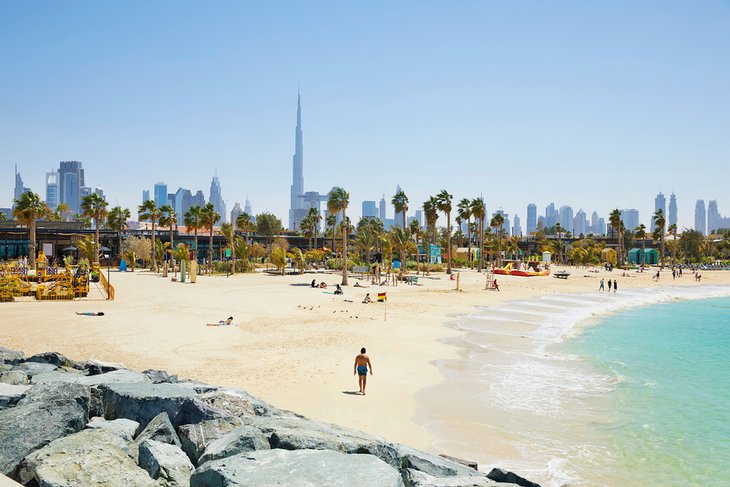
Backed by a fringe of palm trees, the stretch of La Mer Beach in Jumeirah is an easygoing spot for a full day of sun and sea.
Water sports operators here offer Jet Ski trips, boating, fly-boarding, and kayaking for beachgoers who itch to get off the sand, but for those who simply want to sloth out between swimming, there's plenty of sun lounger rental and a wide variety of cafés and restaurants just a hop from the sand for snacking and full meals.
La Mer is a sheltered bay with tranquil water, so it's a safe choice for both families and less-confident swimmers. Like all of Dubai's main beaches, it is regularly patrolled by lifeguards during the day.
If the sea and sand aren't enough, at the beach's northeast point, you'll find Laguna Waterpark, with several waterslides, a lazy river, and a surf pool.
Address: Jumeirah Road, Jumeirah